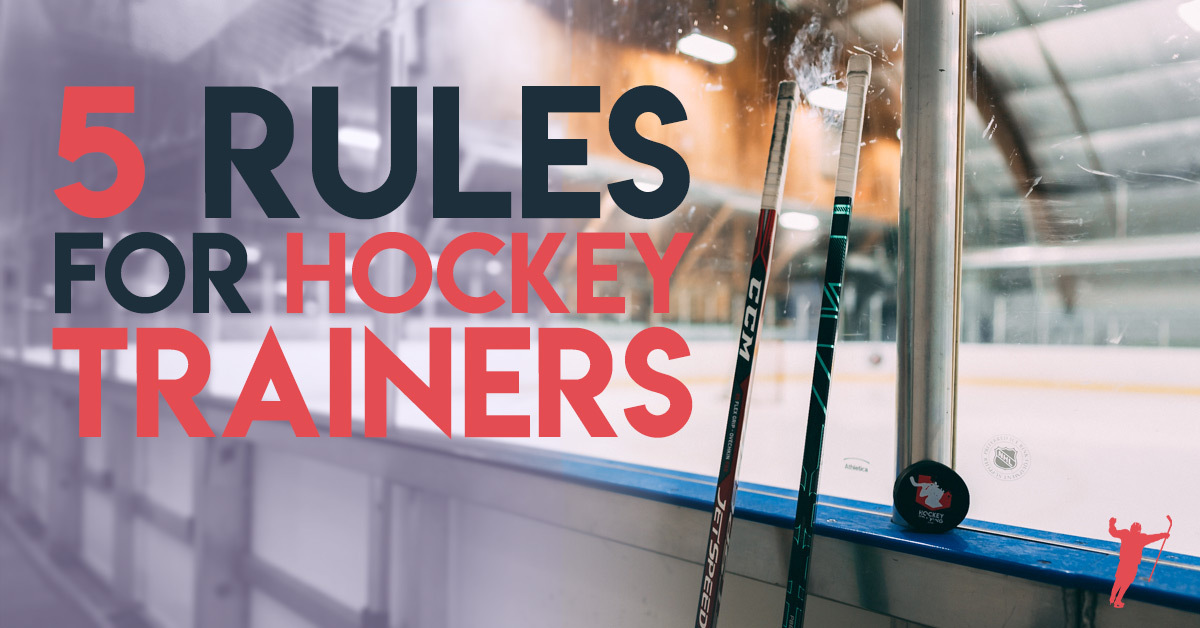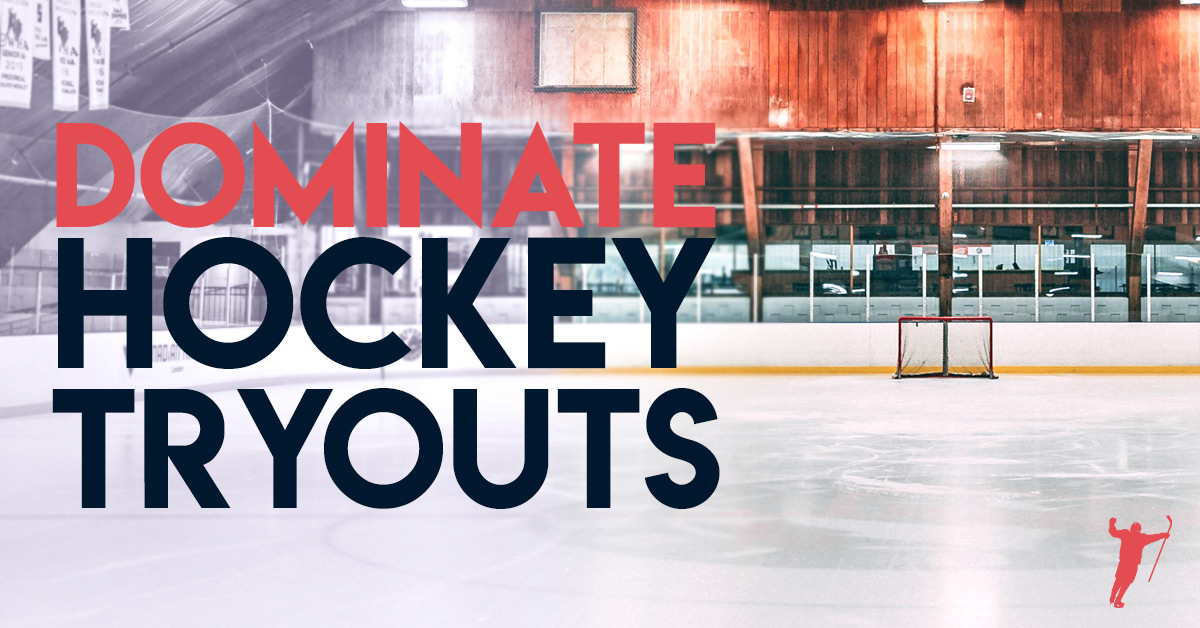In this article, I will provide you with the top five tips that you need to know to become an elite hockey trainer who gets the best results for all their hockey players.
The world of hockey training is rapidly growing, giving us the opportunity to continually learn about how to properly train hockey athletes.
Coaches and parents are respecting the impact that dryland training within a program has toward on-ice skating speed, conditioning, agility, and overall performance.
How a player performs on the ice has everything to do with how well they prepare off the ice.
With that said, here are my top five tips to take your coaching to an elite level.
#1: Meet Them Where They Need to Be Met
Social media has given hockey players and coaches access to example exercises and workouts from professional hockey players who are at the highest possible level of training stimulus and predictable adaptation.
But these are generally not exercises that we should have younger hockey players trying to replicate. Instead, coaches need to understand that you need to meet the athlete where they are ready to be met.
Advanced workouts for a beginner or intermediate trainee will not get them to their end goal more quickly—and honestly, it often slows down the process and puts them at an unnecessary risk for injury.
Always remember: what the elite athletes are doing today with their training does not represent the protocols they followed to get them there.
#2: Understand Sport-Specific Training for Hockey
Strength is a physical quality that is very specific: the gains in strength seen in an exercise are always greatest in that specific exercise.
So, even though strength does transfer to other movements (for example, a squat improves your jump height), the movement you did in the first place will always receive the most strength gain (you will gain more in the squat than you will in the jump).
The degree to which you see an athletic movement improve after making strength gains with a gym exercise is what we would call “strength transfer” (although the more popular term for this phrase is “sport-specific training”).
Strength transfer depends a lot on the similarity of exercises and movements across all of the ways strength can transfer—and not just the movement pattern.
However, since the movement pattern is the easiest to see, this tends to get talked about the most and therefore frequently replicated through embarrassingly “specific” hockey functioning training, like tying a stick to a cable tower and doing resisted wrist shots. This couldn’t be more ridiculous and useless for hockey players, yet the movement pattern appears similar so it is easy to sell on its supposed transferability to an on-ice setting.
When the term “functional training” started gaining massive popularity, strength coaches stopped talking about how to figure out which exercises transferred best to hockey because it was assumed that the movement pattern was the only thing that mattered.
Don’t get me wrong, movement pattern plays a role in transferability, but it doesn’t play the only role.
Within the framework of using sport-specific exercises for hockey, there are eight different ways you can choose an exercise that will be predictably beneficial for hockey performance:
- Contraction emphasis (eccentric vs. isometric vs. concentric)
- Velocity
- Joint angle
- Time under tension
- Stability of working structures during movement
- External load stimulus (weight, band, medicine ball, etc.)
- Vector
- Targeted muscle groups and energy systems
When you break that list down you can begin to take the movement pattern “blinders” off and instead analyze the exercise you’re using and understand how it will transfer to an on-ice game setting.
This is real sport-specific training and represents why so many excellent exercises for hockey performance don’t actually look like the sport at all (pull-ups, anti-rotation core work, squats, deadlifts, split squats, sprints, jumps, etc.)
The fastest hockey player in the world, Connor McDavid, is deadlifting over 500 lbs (source: Gary Roberts via Spittin’ Chiclets podcast). Although the deadlift doesn’t look like the skating stride, it’s pretty clear we can categorize it as hockey-specific training.
#3: Understand Hockey Periodization
The problem with a lot of hockey coaches’ programming is how often they get trapped in the world of pinballing—bouncing from one program to the next with no concrete, methodical approach to a long-term result.
Their approach might seem to match your goals, but does the “big picture” of your long-term periodization strategy make any logical and progressive sense over time to get the desired result?
Every phase should build upon the phase previous to it in some way, shape or form. Anything less becomes a situation where you are exercising, but not training.
Pinballing is totally fine for the general population. They can do whatever they want if they’re just there to get the health benefits and exercise they need—and not the yearly periodized training structure of somebody who wants maximum results. Athletes need to train to get a specific and desired result, and this training must be sequenced in a way that manages fatigue and peak performance.
This is the real difference between exercising and training.
If you’re an athlete, your long-term sequenced periodization structure should lay out goals for each phase that make sense for where they are placed in the year’s schedule and how it will transfer to your ultimate goal.
One phase builds upon the next using the scientific principles of sports training.
Look at doing random program design throughout the year like building your own car from the junkyard: you have to go out and get different pieces from different models, and in the end, you might get the engine to run.
Now compare that to a Rolls Royce made entirely in-house, by hand, with premium parts, using a predetermined plan for structure.
Who is going to perform better in the end, get to structure completion without any plateaus, and get to their goal result faster?
The Rolls Royce will win ten times out of ten, just like a periodized yearly structure for hockey players that controls volume, intensity, and frequency appropriately across the in-season, post-season, off-season, and pre-season.
Build your entire year of training and leave the pinballing for the amateurs.
#4: Build Your Skills, Not Your Tools
Hockey training program design is a skill, and you can’t buy skill no matter how expensive your equipment is.
Think about a carpenter and how they are skilled in the art of carpentry. They can build and fix a wide variety of things because they are skilled carpenters. If they need a hammer, they get a hammer. If they need a screwdriver, they use a screwdriver.
But a tool is only ever as good as it can be applied, and every carpenter knows this.
This is where our industry gets things totally wrong.
You will never see a carpenter get certified in the screwdriver, or certified in using a hammer. That sounds silly. Instead, they are certified as a carpenter and then use the tools at their disposal as they see fit to get the job done in an efficient way.
Yet, in our industry, you will see people get certified in the kettlebell or the medicine ball, or certified in using bands/chains. This is bizarre and completely backwards, because when the only tool you have is a hammer, everything looks like a nail.
The coach who is certified in a specific tool will try to apply it where it is not optimally applicable, and the person who suffers is the hockey player who is stuck running the dumb training program that was prescribed to them.
Hockey training program design is a skill that is founded through understanding the principles and variables of training. No new “hockey specific” exercise equipment will ever replace that.
#5: Communicate Effectively
It’s not always about being informative—it’s about being effective.
You may be the smartest programmer and skills coach in the world, but in order to create change in your team or change in your athlete, they need to understand what you’re saying in a way that truly resonates with them.
- “Krebs cycle metabolic pathways”… how about just energy?
- “Meeting the leucine threshold”… how about just “Go eat 4oz of chicken”?
- “Oxidative phosphorylation”… how about just fat burning?
- “Body composition alteration”… how about just muscular and lean?
I am super grateful for all of the people that have enjoyed my podcasts, videos, and articles. But the feedback I most often receive has nothing to do with the complicated science and has everything to do with these two factors:
- I explain things in a way they can understand
- I provide actionable items they feel comfortable and confident using
Information is not an impressive coaching characteristic if you can’t communicate it clearly. Clarity brings action; complexity brings confusion.
This is what separates “programmers” from real coaches.
Clear communication always beats trying to sound smart, and sounding smart doesn’t mean you’re being an effective coach.
The Solution
The above article exposes just the tip of the iceberg in terms of what it takes to be an excellent coach, but unless that is paired with world-class hockey program design skills, you won’t reach your or your hockey athlete’s true potential.
If you want the complete blueprint on how to master the science of hockey training and combine it with the art of coaching to turn your passion for hockey into a massively successful career, then the brand new Certified Hockey Training Specialist course is precisely what you need.
This is the only hockey-specific certification course in the world. So once you complete it, you’ll likely be the first and only coach in your area with this credential on your resume. This will draw the hockey parents and serious athletes to you like a magnet.
Prepare to become such a popular hockey coach in your area that you can create your own schedule and never again be thrown into the 12–16 hour work shifts that so many trainers are accustomed to.
On top of that, your athletes will experience life-changing transformations on the ice, and soon all the hockey parents will know to contact you to get the best results.
Become a Certified Hockey Training Specialist and guarantee your success today. Click here to get started.
Final Thoughts
I hope this article was able to point you in the right direction to help take your coaching game to the next level.
Hockey is a complex and unique sport, so “winging it” in the coaching world is bound to fail.
Here are the five tips once more:
- Meet them where they need to be met
- Understand sport-specific training for hockey
- Understand hockey periodization
- Build your skills, not your tools
- Communicate effectively
Have a look at that list and identify where you’re currently struggling, because that’s the “next big thing” you can work on to level-up in this industry.
If you want help along the way, the brand new Certified Hockey Training Specialist Course is now live as well and will give you all the tools you need to become an elite hockey strength and conditioning coach.










Another great article we can relate to. Also some item that make us think as a coach and how we influence our players
Great tips about hockey